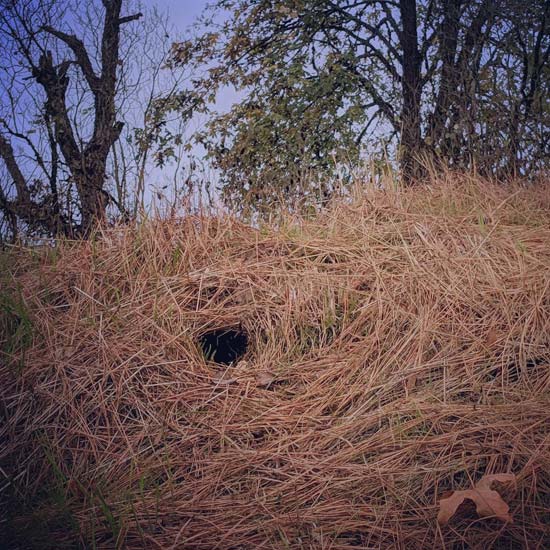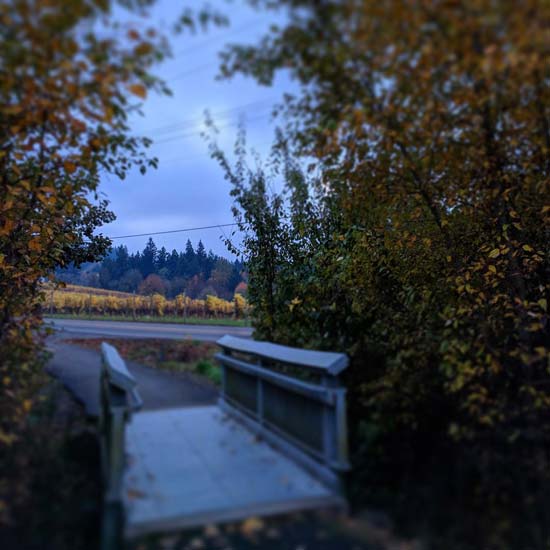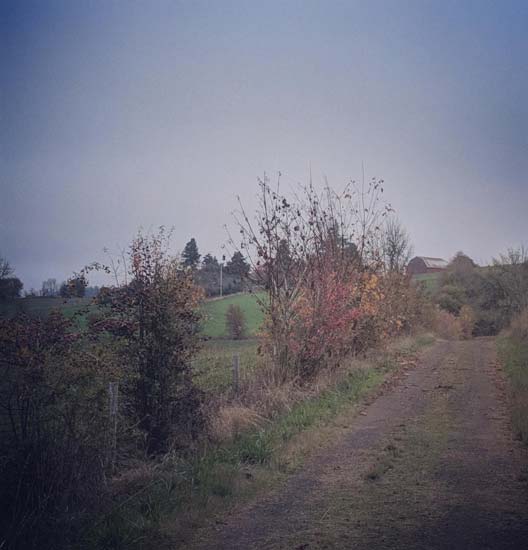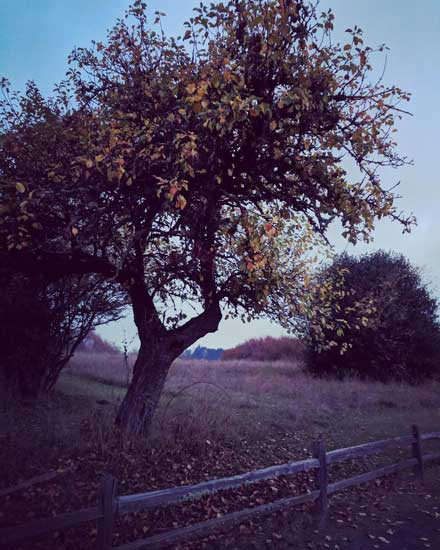I went for a walk this morning, as I do most days, before the sky held enough light to see in color.
Morning joy is one of the most reliable sorts for me. Part of the appeal is living the visible, audible, gustable, tangible changes rung by the dawn. In the quieter winter months, with light coming late according to our shifted clocks, I tend to walk slowly, and luxuriate in noticing.
I have a habit of noticing internally as well, unfocusing enough in that quiet hour to let words and phrases, concepts that are forming a pattern in my life, come up for air. Later in the day, I might work with them, but mornings I’m just watching, like they’re owls or foxes. I try, not always with success, to be very quiet.

The concept of the threshold has surfaced often lately: the boundary between now and next, here and there, known and Other. Or dark and day, land and sky, path and field.
I’ve been walking each morning the exact same path for months now, at this same time of day. A threshold time, in fact. A reason for the choice, before the word had begun its present pattern of regular surfacing.
I used to chide myself for my addiction to my camera. I spent a few weeks refusing to raise it on my walks — just look, I kept instructing. When I let myself have it back, I understood at last why I so value its help. Composing a photograph with no particular motive is an essentially receptive, reflective act. If you’re wandering without your head filled with plans or figurings or another person’s voice, you will be offered a number of gifts by the world around you. One way I receive such gifts is through my camera.

In fact I can’t take credit for this understanding at all; it too was a series of gifts, a slow unfurling.
A friend, who I can feel myself beginning to regard as a mentor, employs photography in a practice called visio divina. It’s the visual equivalent of the more familiar lectio divina, a practice of sacred reading wherein a short text is allowed to resonate within the heart, and there acquire new meaning. In an exhibition of her work, she emphasized how the photos had come to her, how the process of inviting and engaging with them required a particular sort of openness.
Then I dipped into a book* recently where the author drew a clear line between “taking” a photograph and receiving one. And the penny dropped.
The same author (Christine Valters Paintner) in the same book (the gorgeously honey-named The Soul’s Slow Ripening) discusses threshold-noticing as a sacred practice. She suggests a contemplative walk, camera in hand, remaining open to receiving images of liminal spaces. In a way that becomes more common as I practice contemplation, I found this synchronicity slow and sweet — and not particularly surprising. So this morning I set my boots to dirt and pavement with my noticing tuned toward receiving thresholds.
And just as mysteriously as this experience always manifests, my familiar path doubled and deepened and acquired new dimensions. That never were not, of course, but how much can the human brain handle at any one time?
There’s no change when this happens that you can pin down or show someone else. Also the change is total. Every time, I catch a glimmer, as of first morning sun in a puddle, of what it must be to perceive the weft of an Otherworld, close-woven beside our own.

The photographs I received from this shifted vision feel to me like collaborations, conversations with a resonant moment. The initial image was just accepted; the editing an intuitive process of bringing out what spoke to me in that moment of acceptance. Photo editing as meditation, who knew?
They will of course look different to you. Though your viewing them is a doubling as well, and I give them without expectation of how they might engage you. There must be infinite perceptions of our one reality, which is many, which is all, which is Mystery.
Which I am glad to share with you, and for which reason I bless this next threshold where our time together ends. May you walk, and sit, and work and play, with noticing. May you bless the thresholds that find you; may they bless you back.

Dark-Time Threshold
Black leaf
on paling cloud
grips winter hawthorn,
unmoved by the last exhale of fading stars.
Or my breath-held waiting.
By the time ki finishes
asking of this dawn
their weighty question,
I can just about
see color. I can see
the sweep of storm wings
leisurely northing. I can hear
not a feathered sound.
Hold with me a moment,
Day, to grieve as we are left.
To bless the crossing.





Leave a Reply